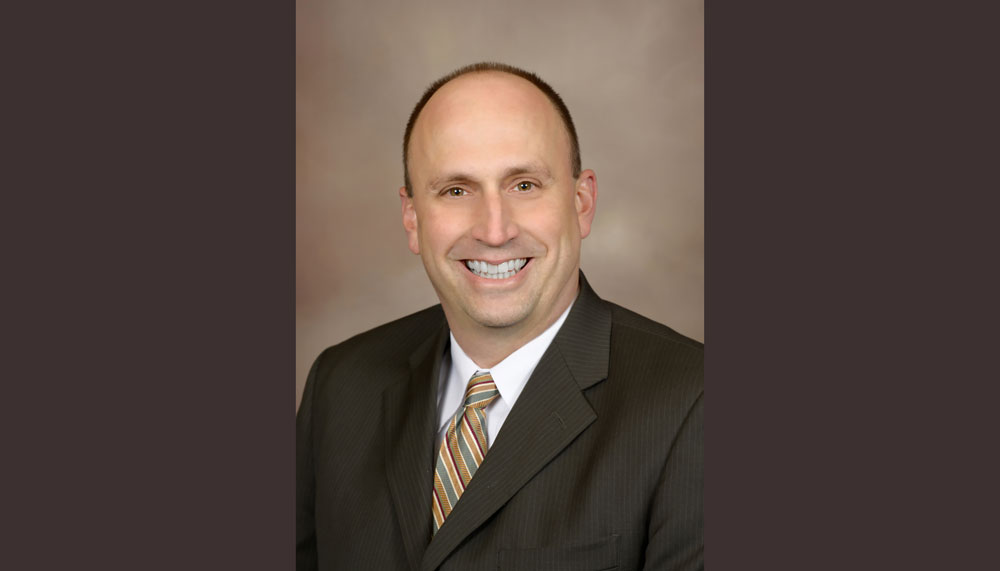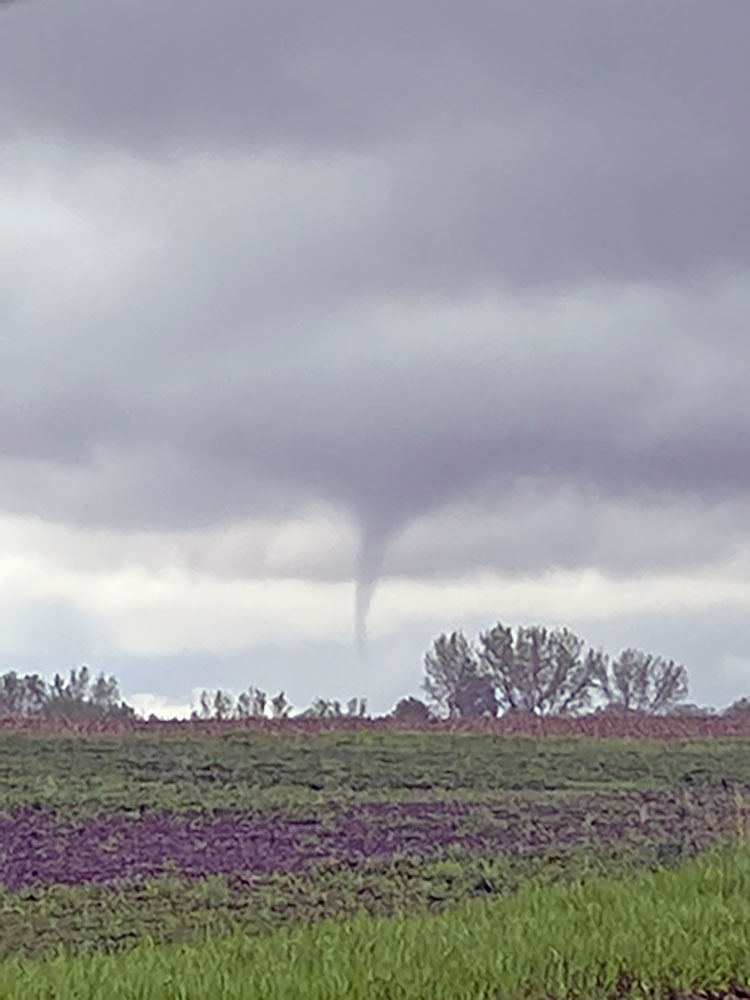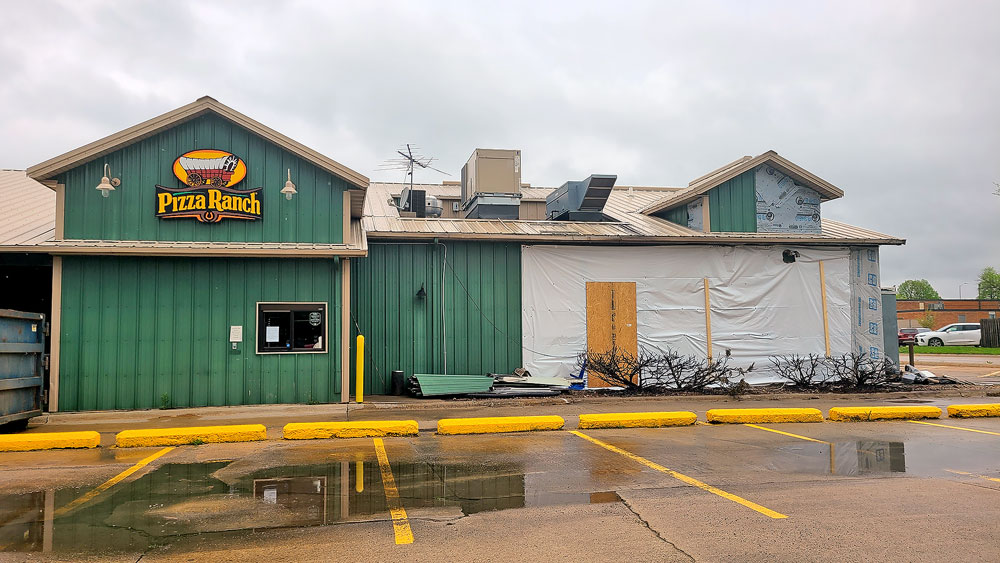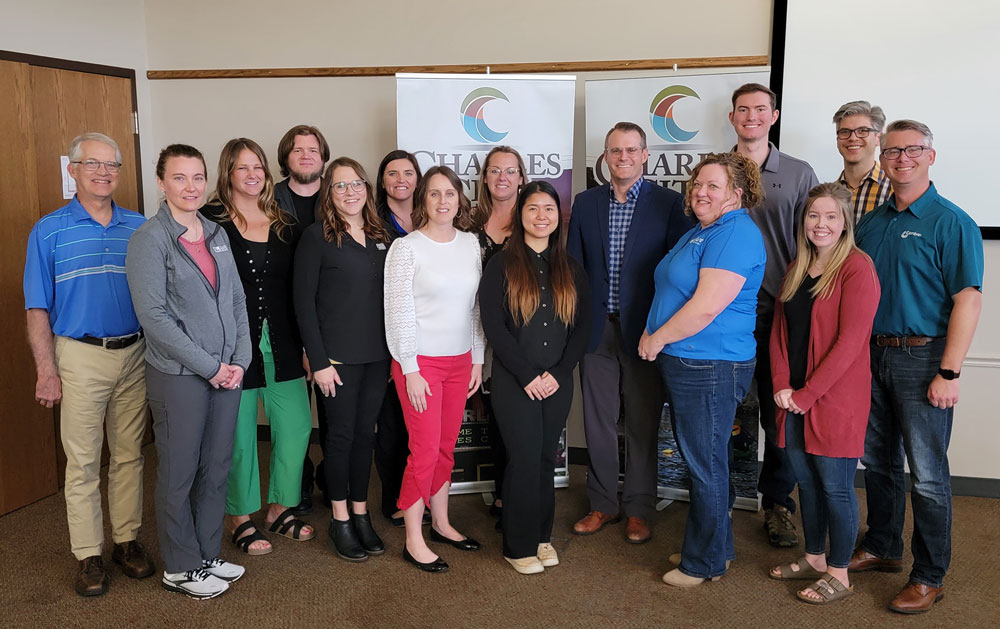Drainage district repair has high price tag for property owners

By Bob Steenson, bsteenson@charlescitypress.com
A drainage tile system installed more than 100 years ago in almost 1,800 acres of farmland east of Charles City could cost current property owners in that district almost half a million dollars to repair, with no guarantee additional expensive patches wouldn’t be needed before long in other areas of the district.
The price to improve the entire system could be around $1.5 million and would also mean redrawing the boundaries of the drainage district and reclassifying how much each property owners pays.
Fifty-two names of property owners, trusts and organizations were sent a letter by Floyd County advising them of a hearing to take place Tuesday morning regarding plans for the drainage district.
About a dozen people attended the public hearing in the Floyd County courthouse, moved to the district courtroom to allow room for social distancing. Another seven or eight people participated in the meeting electronically, and others had sent letters offering input.
Some of the current property owners in the district who aren’t farmers said that when they purchased their property they had no idea they were buying into a potentially expensive system that they are now legally required to help pay for.
No one at the meeting spoke out in favor of spending the money to improve the entire system, and the Floyd County Board of Supervisors ultimately voted to approve the repairs.
Floyd County does not own the drainage tile system in Drainage District 1. But the three county supervisors act as trustees for the district – and for most of the 34 drainage districts in the county – and they have the obligation to assess costs to property owners in the districts to maintain the systems.
Engineer Kent Rode, with Bolton & Menk Inc. of Algona, outlined some of the problems with the current system in Drainage District 1 and some of the options.
Some areas in the district are not being drained as they should be because some main tiles and sub-main tiles are damaged and failing, and in some areas trees have grown over and into the tiles.
“At a minimum these damaged segments of tile will need to be replaced and trees growing above the tile lines removed,” Rode’s report says, pointing out that Iowa Code requires the trustees to keep the system in at least its original efficiency or capacity.
Repairing the parts of the system that are having problems now would not guarantee that other areas of the system – also built with tile that is now more than 100 years old – would not fail in the near future, Rode said.
The cost to repair the system is estimated at $550,000, with $477,000 of that assessable to the property owners in the district and $73,000 paid by the county and state for work under roads.
With 1,767 acres in the drainage district, the average cost to property owners to repair the system would be $270 per acre that they own in the district, although there are other factors than just acreage that go into deciding how much each property owner is assessed.
The other option, Rode’s report says, is to improve the entire system with new tile.
Some of the current tile pipe is undersized for conditions and would be replaced with larger diameter tile. Much of it would be buried deeper and at the correct grade, and some of it would be relocated, taking advantage of knowledge and surveying techniques that were not available 105 years ago.
With the quality of materials that are available now, a rebuilt drainage district could last another 100 years or longer, Rode said.
The cost to improve the system is estimated at $1.572 million, with $1.470 million of that assessable to the property owners. That works out to about $832 per acre on average.
The county typically allows property owners to spread out drainage assessments over 10 or 20 years.
As part of an improvement of the tile system, the district would need to be reclassified, Rode said, although a reclassification can also be done with the repair option, and that’s what the supervisors decided to do.
Boundaries would be redrawn to more accurately represent the district watershed, meaning a small amount of land on the edges of the current district might no longer be in the newly drawn district. It also means the district could annex some land that isn’t currently in the district now but that benefits from the drainage system.
The drainage district was formed in 1915 and the tile installed in 1917, a report by Rode says. Over the years the property owners in the district have been assessed costs 15 times to maintain the tile system.
State legislation passed in 1904 allowed farmers in an area to petition to form a drainage district to install underground tile lines to help drain water from an area and make it more available for farming.
An engineer would help define the watershed area and draw up boundaries for the district, then the property owners would sign a contract showing how costs for the district would be split up, according to the amount of land and the benefit each property owner received.
The county acts as the administrator of the district, with legal authority to assess costs for maintenance and repairs to the property owners.
The property owners who spoke at the hearing Tuesday were nearly unanimous in their concern over the cost of either the repair or the improvement option, but if they had to have one they preferred the lower cost option.
Supervisor Doug Kamm said the district should be reclassified even if only the repairs are made, so the assessments more accurately reflect the value properties receive and so the district more accurately includes the property that lies in the watershed.
The Board of Supervisors passed a motion to repair the tile system and to reclassify and possibly annex new property into the district.
Repairs could be made this fall. Costs will be assessed to the property owners when the work is completed and the reclassification is done.









Social Share